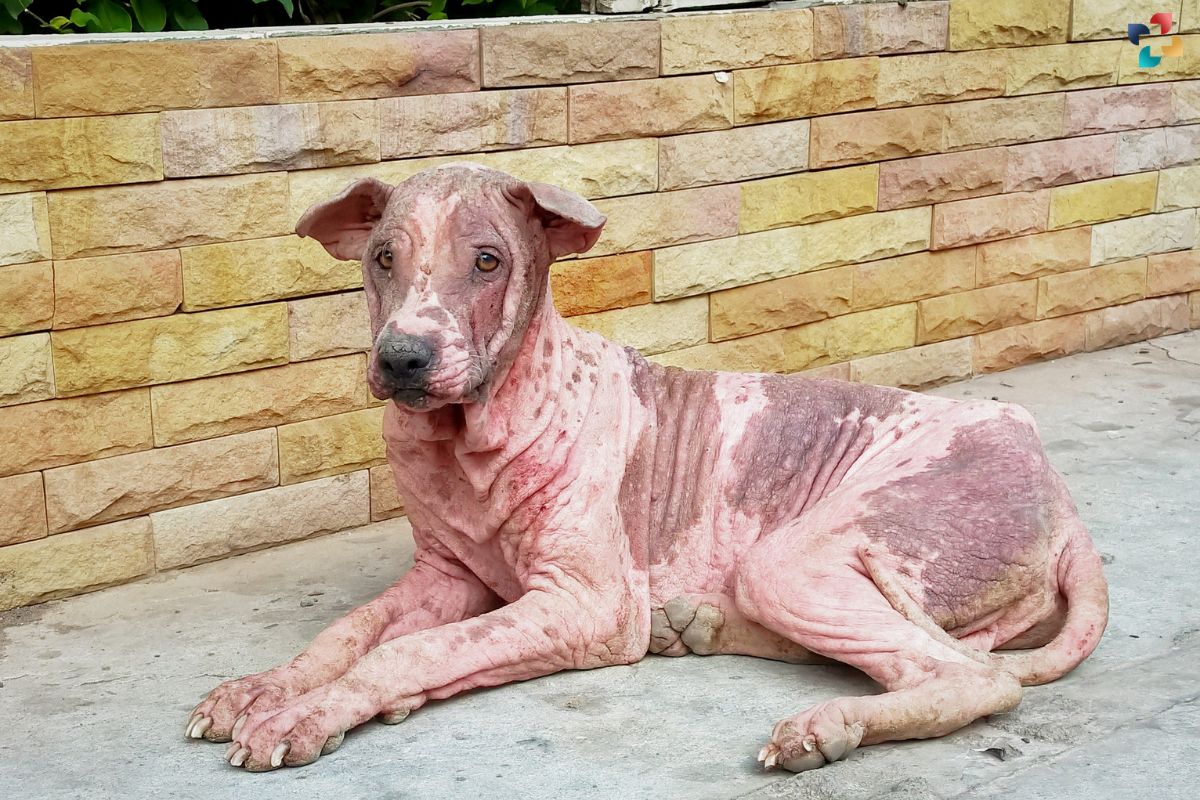Skin problems in dogs are among the most common reasons for veterinary visits. From itching and scratching to hair loss and inflammation, these issues can significantly impact a dog’s quality of life. Understanding the causes, symptoms, and treatments of canine dermatological conditions is crucial for pet owners to ensure their furry friends live healthy and happy lives.
Understanding Canine Dermatological Issues
Skin problems in dogs encompass a wide range of conditions, including allergies, infections, parasites, hormonal imbalances, and genetic predispositions. Allergies, both environmental and food-related, are a leading cause of dermatological issues in dogs. These allergies can manifest as atopic dermatitis, causing itching, redness, and skin inflammation.
Infections, such as bacterial, fungal, and yeast infections, can also affect a dog’s skin. These infections often result from underlying issues like allergies or skin trauma. Parasites like fleas, ticks, mites, and lice are notorious for causing skin irritation and discomfort in dogs. Additionally, hormonal imbalances, like hypothyroidism or Cushing’s disease, can lead to skin problems due to changes in hormone levels affecting the skin’s health.
Genetics also play a significant role in canine dermatological issues. Breeds like Bulldogs, Boxers, and Dalmatians are prone to specific skin conditions due to their genetic makeup. Understanding a dog’s breed and predispositions can help in early detection and management of skin problems.
Symptoms of Skin Problems in Dogs
Recognizing the signs of skin problems in dogs is essential for prompt intervention. Common symptoms include itching, scratching, licking, chewing, redness, swelling, hair loss, flakiness, and odor. Dogs may also display behavioral changes like restlessness or irritability due to discomfort caused by skin issues.

Persistent scratching or licking, particularly in specific areas like the ears, paws, groin, or underarms, often indicates an underlying problem. Changes in coat appearance, such as dullness, dryness, or greasiness, can also signify dermatological issues. Owners should regularly inspect their dog’s skin for any abnormalities and consult a veterinarian if they notice concerning signs.
Preventing Canine Dermatological Issues
While some skin problems in dogs are unavoidable, there are preventive measures owners can take to minimize the risk. Maintaining good hygiene is crucial, including regular bathing with a gentle, vet-approved shampoo and keeping the dog’s living environment clean. Proper nutrition is also essential for healthy skin, so feeding a balanced diet rich in essential nutrients is paramount.
Regular grooming sessions not only keep the dog’s coat clean but also allow owners to detect any skin abnormalities early on. Avoiding exposure to potential allergens, such as certain foods, plants, or environmental triggers, can help prevent allergic reactions. Additionally, using parasite preventatives, like flea and tick treatments, is vital for keeping parasites at bay.
Seeking Veterinary Care and Treatment Options
When skin problems arise, seeking veterinary care is imperative for proper diagnosis and treatment. A veterinarian will conduct a thorough examination, which may include skin scrapings, blood tests, or allergy testing, to identify the underlying cause of the issue.

Treatment options vary depending on the specific condition but may include topical or oral medications, dietary changes, allergy management, parasite control, and addressing any underlying health issues. In some cases, long-term management may be necessary to control chronic skin conditions and prevent flare-ups.
It’s essential for owners to follow their veterinarian’s recommendations diligently and attend follow-up appointments as needed. Monitoring the dog’s response to treatment and making adjustments as necessary is crucial for successful management of skin problems.
Exploring Holistic Approaches to Canine Skin Health
In addition to traditional veterinary care, some owners may explore holistic approaches to managing their dog’s skin problems. While these methods should not replace conventional treatment, they can complement veterinary care and contribute to overall skin health.
1. Nutritional Supplements:
Omega-3 fatty acids, found in fish oil supplements, can help improve skin and coat health by reducing inflammation and promoting moisture retention. Similarly, supplements containing vitamins A and E may support skin health and aid in wound healing.
2. Herbal Remedies:
Certain herbs, such as calendula, chamomile, and aloe vera, have soothing and anti-inflammatory properties that can benefit dogs with skin issues. These herbs can be applied topically or administered orally under the guidance of a holistic veterinarian.
3. Acupuncture and Massage:
Alternative therapies like acupuncture and massage can help alleviate discomfort associated with skin problems and promote relaxation. These modalities may help improve blood circulation, reduce inflammation, and enhance the body’s natural healing processes.
4. Probiotics:
Probiotic supplements may support gastrointestinal health, which is closely linked to skin health. By maintaining a healthy balance of gut bacteria, probiotics can help reduce inflammation and improve the immune response, potentially benefiting dogs with allergic skin conditions.
5. Environmental Modifications:
Holistic approaches also emphasize environmental modifications to reduce stress and minimize exposure to potential allergens. This may include using natural cleaning products, avoiding synthetic fragrances, and providing a calm and harmonious living environment for the dog.
It’s essential for owners considering holistic approaches to consult with a qualified holistic veterinarian who can provide guidance tailored to their dog’s individual needs. While these methods may offer benefits, they should always be used in conjunction with conventional veterinary care to ensure comprehensive treatment and monitoring.
The Importance of Patience and Persistence
Managing skin problems in dogs can be challenging and may require patience and persistence. It’s important for owners to remain committed to their dog’s care regimen and work closely with their veterinarian to address any concerns or setbacks along the way.
Some skin conditions, such as allergies, may require ongoing management and lifestyle adjustments to keep symptoms under control. By staying proactive and vigilant, owners can help minimize discomfort and improve their dog’s quality of life over the long term.
Additionally, regular communication with the veterinarian is crucial for monitoring progress, adjusting treatment plans as needed, and addressing any new developments promptly. Open dialogue and collaboration between owners and veterinarians are key to successfully managing canine dermatological issues.
Empowering Owners with Knowledge and Support

Educating pet owners about skin problems in dogs and empowering them to take an active role in their dog’s care is essential for optimal outcomes. Providing resources, such as educational materials, support groups, and access to knowledgeable professionals, can help owners make informed decisions and navigate the complexities of canine dermatology.
Furthermore, fostering a supportive and compassionate community where owners can share experiences, ask questions, and offer encouragement can be invaluable. By coming together to exchange information and support one another, pet owners can navigate the challenges of managing skin problems in dogs more effectively.
Conclusion
Skin problems in dogs are a common and often complex issue that requires comprehensive management and care. By understanding the causes, symptoms, and treatment options for canine dermatological issues, owners can play an active role in promoting their dog’s skin health and overall well-being.
From recognizing the signs of skin problems to implementing preventive measures and seeking timely veterinary care, proactive intervention is key to addressing canine dermatological issues effectively. By working collaboratively with veterinarians, exploring holistic approaches, and staying committed to their dog’s care regimen, owners can help their furry companions live comfortable, itch-free lives.
Ultimately, by prioritizing skin health and taking a proactive approach to managing dermatological issues, owners can ensure that their dogs enjoy a higher quality of life and continue to bring joy and companionship to their families for years to come.

Understanding and Managing Dog Eye Infections: Causes, Symptoms, and Treatment
In this comprehensive guide, we’ll explore the causes, symptoms, and treatment options for dog eye infections, as well as preventive measures to keep your canine companion’s eyes healthy.











